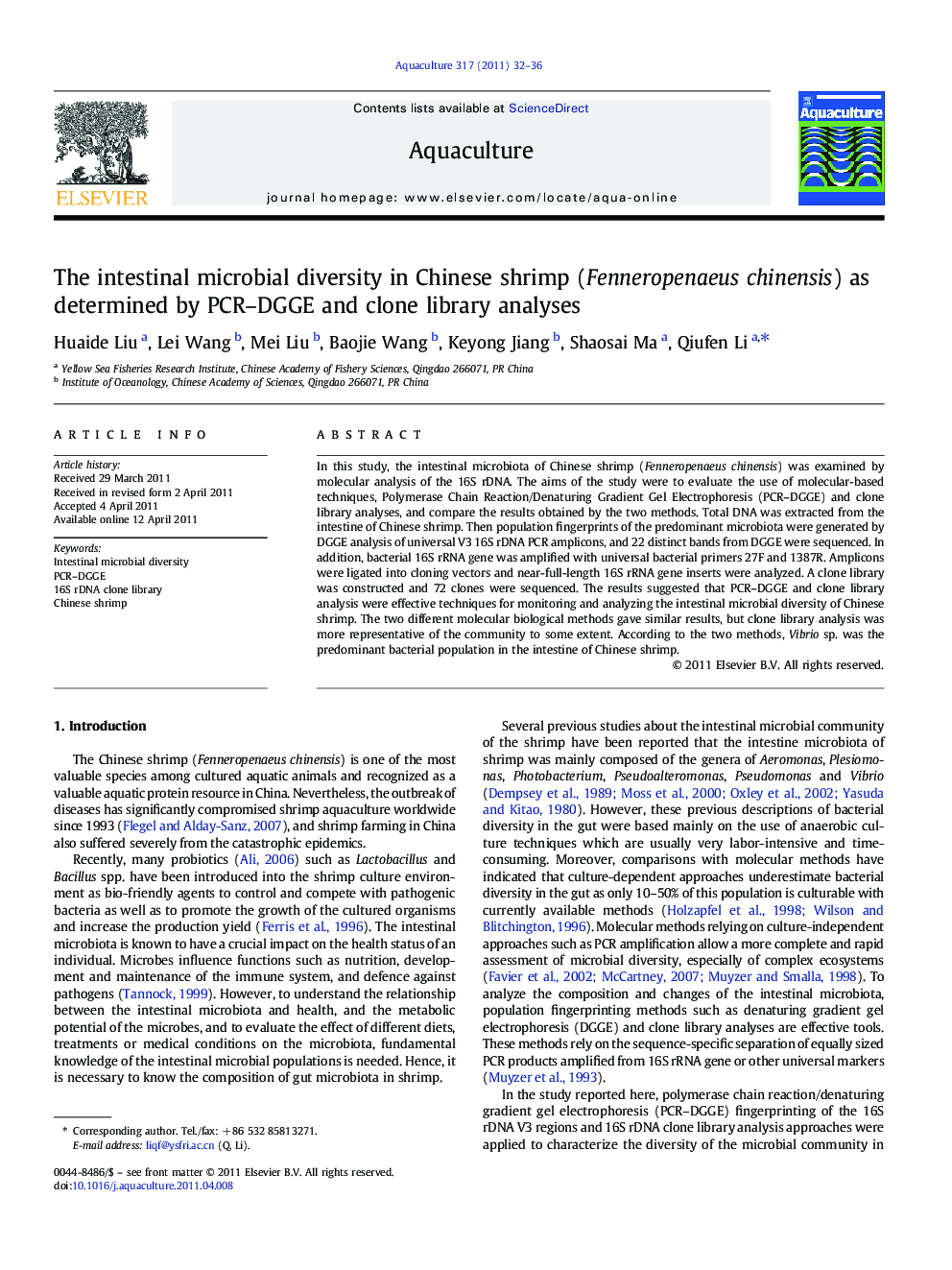| Article ID | Journal | Published Year | Pages | File Type |
|---|---|---|---|---|
| 2423242 | Aquaculture | 2011 | 5 Pages |
In this study, the intestinal microbiota of Chinese shrimp (Fenneropenaeus chinensis) was examined by molecular analysis of the 16S rDNA. The aims of the study were to evaluate the use of molecular-based techniques, Polymerase Chain Reaction/Denaturing Gradient Gel Electrophoresis (PCR–DGGE) and clone library analyses, and compare the results obtained by the two methods. Total DNA was extracted from the intestine of Chinese shrimp. Then population fingerprints of the predominant microbiota were generated by DGGE analysis of universal V3 16S rDNA PCR amplicons, and 22 distinct bands from DGGE were sequenced. In addition, bacterial 16S rRNA gene was amplified with universal bacterial primers 27F and 1387R. Amplicons were ligated into cloning vectors and near-full-length 16S rRNA gene inserts were analyzed. A clone library was constructed and 72 clones were sequenced. The results suggested that PCR–DGGE and clone library analysis were effective techniques for monitoring and analyzing the intestinal microbial diversity of Chinese shrimp. The two different molecular biological methods gave similar results, but clone library analysis was more representative of the community to some extent. According to the two methods, Vibrio sp. was the predominant bacterial population in the intestine of Chinese shrimp.
